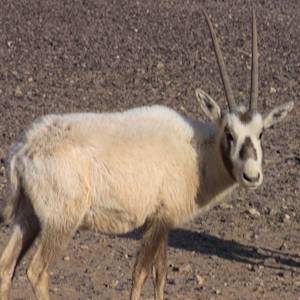Caspian Tiger Extinct
2003 CE • Iran, Armenia, Azerbaijan, Iraq, Afghanistan, Turkey, Mongolia, Kazakhstan, Kyrgyzstan, Tajikistan, Turkmenistan, and Uzbekistan
"The Caspian Tiger,(Panthera tigris virgata) genetic roots span over a million years . . . The Caspian Tiger and the Amur or Siberian Tiger began in China and spread westward along the Silk Road. Sometime later these magnificent tigers expanded their territory by moving northward and eastward into what is known as the former Soviet Union . . . [T]he Caspian Tiger inhabited the inland drainage basins of Western and Eastern Asia among the reeds and waterways hunting their prey hidden by lush vegetation . . . Unfortunately, the riverside vegetation was cleared for cultivation and in-habitation, thus the Caspian Tiger was deprived of its habitat and its prey in the 1930s. Cotton fields were planted and the rivers were used for irrigation. Soon, the Caspian Tiger became an alien in its own territory and was targeted and hunted down as a menace to human settlements and a threat to livestock. The Caspian Tiger pelt was prized for its beauty and fetched a hefty price. A further environmental insult occurred when the river vegetation and reeds were cleared to eradicate malaria on the Southern shores of the Caspian Sea in the 1950s and 1960s. The last reported Caspian Tiger sighting happened in the 1960s and 1970s." The species was officially declared extinct in 2003.
Mary Anne Simpson, "Caspian Tiger Extinct But Lives On In Siberian Tiger," Phys.org, January 21, 2009, https://phys.org/news/2009-01-caspian-tiger-extinct-siberian.html.
Image: Captive Caspian Tiger, Berlin Zoo, 1899.


Learn about Maya Lin’s fifth and final memorial: a multi-platform science based artwork that presents an ecological history of our world - past, present, and future.

Discover ecological histories and stories of former abundance, loss, and recovery on the map of memory.

Learn how we can reduce our emissions and protect and restore species and habitats – around the world.

See how art can help us rethink the problems we face, and give us hope that each one of us can make a difference.

Help make a global memorial something personal and close to home. Share your stories of the natural world.


